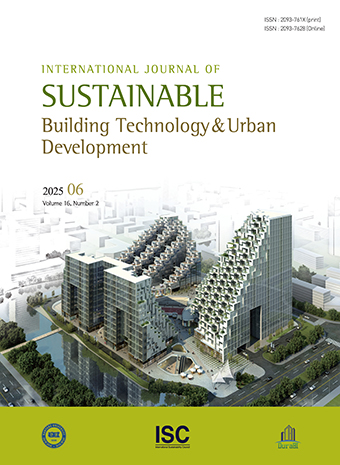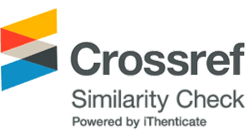General Article
Ministry of Employment and Labor, Status of industrial accidents in 2023 [Online], 2024. Available at: https://www.moel.go.kr/policy/policydata/view.do?bbs_seq=20240401868 [Accessed 30/09/2024].
Korea Occupational Safety & Health Agency, Construction industry accident fatality rate [Online], 2024. Available at: https://www.kosha.or.kr/kosha/business/accidentrate.do [Accessed 30/09/2024].
J.A. Gambatese, Owner involvement in construction site safety. In Construction Congress VI: Building Together for a Better Tomorrow in an Increasingly Complex World. (2000), pp. 661-670. DOI: 10.1061/40475(278)71.
10.1061/40475(278)71X. Huang and J. Hinze, Owner's role in construction safety. Journal of Construction Engineering and Management. 132(2) (2006), pp. 164-173.
10.1061/(ASCE)0733-9364(2006)132:2(164)J.Y. Lim, K.K. Han, and S.K. Kim, A Study of Client's Role for Safety Management at Construction Sites. Journal of the Korea Institute of Building Construction. 8(5) (2008), pp. 75-83.
10.5345/JKIC.2008.8.5.075C. Wu, D. Fang, and N. Li, Roles of owners' leadership in construction safety: The case of high-speed railway construction projects in China. International Journal of Project Management. 33(8) (2015), pp. 1665-1679.
10.1016/j.ijproman.2015.07.005Ministry of Land, Infrastructure and Transport, Construction Safety Management Manual [Online], 2015. Available at: https://www.molit.go.kr/USR/policyData/m_34681/dtl.jsp?id=3865 [Accessed 24/10/2023].
Korea Expressway Corporation, Construction Site Safety Management Guidelines. February (1997), pp. 1-242.
OSHA.com, Construction Safety Management: What Does a Safety Officer Do? [Online], 2023. Available at: https://www.osha.com/blog/construction-safety-management [Accessed 23/05/2024].
G.Y. Yoon and S.C. Kim, Preliminary Study on the Factor Analysis for Accident Prevention. Proceedings of the Korea Institute Bulilding Construction Conference. 10(1) (2010), pp. 282-286.
H.W. Heinrich, D. Petersen, and N. Ross, Industrial Accident Prevention. 1980, New York, USA: McGraw-Hill book company, inc.
P. Marshall, A. Hirmas, and M. Singer, Heinrich's pyramid and occupational safety: a statistical validation methodology. Safety Science. 101 (2018), pp. 180-189.
10.1016/j.ssci.2017.09.005Z. Zhou, Y.M. Goh, and Q. Li, Overview and analysis of safety management studies in the construction industry. Safety Science. 72 (2015), pp. 337-350.
10.1016/j.ssci.2014.10.006M.R. Hallowell, Safety-knowledge management in American construction organizations. Journal of Management of Engineering. 28(2) (2012), pp. 203-211.
10.1061/(ASCE)ME.1943-5479.0000067J. Andresen, A. Baldwin, M. Betts, C. Carter, A. Hamilton, E. Stokes, and T. Thorpe, A framework for measuring IT innovation benefits. Journal of Information Technology in Construction (ITcon). 5(4) (2000), pp. 57-72.
P.G. de Santos, J. Estremera, E. Garcia, and M. Armada, Power assist devices for installing plaster panels in construction. Automation in Construction, 17(4) (2008), pp. 459-466.
10.1016/j.autcon.2007.08.006J.M. Lee, A Study on Dashboard Convergence Design for Data Visualization. The Korean Society of Science & Art. 38(5) (2020), pp. 423-435. DOI: 10.17548/ksaf.2020.12.30.423.
10.17548/ksaf.2020.12.30.423Y.J. Park and I.H. Jo, Need Analysis for Learning Analytics Dashboard in LMS: Applying Activity Theory as an Analytic and design Tool. Journal of Educational Technology. 30(2) (2014), pp. 221-258. DOI: 10.17232/KSET.30.2.221.
10.17232/KSET.30.2.221T. Gross, C. Stary, and A. Totter, User-centered awareness in computer-supported cooperative work-systems: Structured embedding of findings from social sciences. International Journal of Human-Computer Interaction. 18(3) (2005), pp. 323-360.
10.1207/s15327590ijhc1803_5D.E. Jo, The needs analysis and dashboard design for building customized student support platform based on university learning analysis data, Ph.D. dissertation, Dept. of Education, Dong-A Univ., Busan, Korea, 2021.
N. Dalkey and O. Helmer, An experimental application of the Delphi method to the use of experts. Management science. 9(3) (1963), pp. 458-467.
10.1287/mnsc.9.3.458E. Ziglio, The Delphi method and its contribution to decision-making. Gazing into the oracle: The Delphi method and its application to social policy and public health. 5 (1996), pp. 3-33.
J. Landeta, Current validity of the Delphi method in social sciences. Technological forecasting and social change. 73(5) (2006), pp. 467-482.
10.1016/j.techfore.2005.09.002J.R. Avella, Delphi panels: Research design, procedures, advantages, and challenges. International Journal of Doctoral Studies. 11 (2016), pp. 305-321.
10.28945/3561J. Kim and A. Hong, A Study on the Work Personality Competency Using the Delphi Method. Journal of Education and Culture. 23(5) (2017), pp. 87-114.
10.24159/joec.2017.23.5.87E.D.O. Erkal, M.R. Hallowell, and S. Bhandari, Formal evaluation of construction safety performance metrics and a case for a balanced approach. Journal of safety research. 85 (2023), pp. 380-390.
10.1016/j.jsr.2023.04.00537330887C.H. Lawshe, A quantitative approach to content validity. Personnel psychology. 28(4) (1975), pp. 563-575.
10.1111/j.1744-6570.1975.tb01393.xJ.M. English and G.L. Kernan, The prediction of air travel and aircraft technology to the year 2000 using the Delphi method. Transportation research. 10(1) (1976), pp. 1-8.
10.1016/0041-1647(76)90094-0- Publisher :Sustainable Building Research Center (ERC) Innovative Durable Building and Infrastructure Research Center
- Publisher(Ko) :건설구조물 내구성혁신 연구센터
- Journal Title :International Journal of Sustainable Building Technology and Urban Development
- Volume : 15
- No :4
- Pages :529-544
- Received Date : 2024-11-15
- Accepted Date : 2024-12-16
- DOI :https://doi.org/10.22712/susb.20240037




 International Journal of Sustainable Building Technology and Urban Development
International Journal of Sustainable Building Technology and Urban Development










